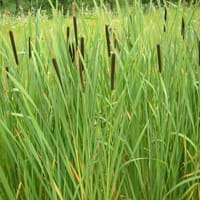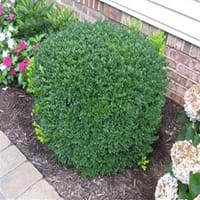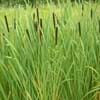Life Span
Perennial
Perennial
Type
Aquatics
Broadleaf Evergreen
Origin
World/Pandemic, North America, Caribbean, Europe, Northern Africa, Asia
Hybrid origin
Types
Not Available
Not available
Habitat
Boggy areas, Near ponds
Anthropogenic, meadows, Slopes
USDA Hardiness Zone
2-12
6-9
AHS Heat Zone
12-1
Not Available
Habit
Clump-Forming
Oval or Rounded
Flower Color
Sienna, Chocolate
Green, Light Yellow
Flower Color Modifier
Not Available
Bicolor
Fruit Color
Not Available
Not Available
Leaf Color in Spring
Green
Green, Dark Green
Leaf Color in Summer
Green
Dark Green
Leaf Color in Fall
Not Available
Dark Green
Leaf Color in Winter
Green
Dark Green, Bronze
Leaf Shape
Grass like
Oblong elliptic
Plant Season
Summer, Fall
Spring, Summer, Fall, Winter
Sunlight
Full Sun, Partial Sun
Full Sun, Partial Sun, Partial shade
Type of Soil
Loam, Sand
Loam, Sand
The pH of Soil
Acidic, Neutral, Alkaline
Acidic, Neutral
Soil Drainage
Poorly Drained
Well drained
Tolerances
Wet Site
Pollution
Where to Plant?
Container, Ground
Container, Ground, Pot
How to Plant?
Divison, Seedlings
Seedlings
Plant Maintenance
Medium
Medium
Watering Requirements
Does not require regular watering, Water Deeply
Keep ground moist, Keep immersed in water, Medium
In Summer
Lots of watering
Lots of watering
In Spring
Moderate
Moderate
In Winter
Average Water
Average Water
Soil pH
Acidic, Neutral, Alkaline
Acidic, Neutral
Soil Type
Loam, Sand
Loam, Sand
Soil Drainage Capacity
Poorly Drained
Well drained
Sun Exposure
Full Sun, Partial Sun
Full Sun, Partial Sun, Partial shade
Pruning
Cut limbs, Remove damaged leaves, Remove dead branches, Remove dead leaves, Remove dead or diseased plant parts
Remove damaged leaves, Remove dead branches, Remove dead leaves
Fertilizers
All-Purpose Liquid Fertilizer, Apply 5-10-5 amounts, Apply N-P-K
10-10-10
Pests and Diseases
Red blotch
Blight, Leaf spot, Leafminer, Mites, Psyllids
Plant Tolerance
Wet Site
Pollution
Flowers
Yes
Insignificant
Flower Petal Number
Not Available
Not Available
Edible Fruit
Not Available
No
Foliage Texture
Coarse
Fine
Foliage Sheen
Matte
Glossy
Attracts
Birds
Flying insects, Insects
Allergy
Skin rash
Itchiness, Skin irritation
Aesthetic Uses
Ground Cover, Showy Purposes
Bonsai, Decorating walls, Landscape Designing, Mass in beds, Mixed Border, Showy Purposes, Used for decorating walls, fences, gates, hedges, etc., Used for making hedges
Beauty Benefits
Not Available
Not Available
Environmental Uses
Air purification, soil stabilisation
Air purification, Food for animals, Food for birds
Medicinal Uses
anticoagulant, Astringent, Burns, Diuretic, Emmenagogue, Galactogogue, Haemostatic, Miscellany, Refrigerant, Sedative, Tonic, Vulnerary
Not Available
Part of Plant Used
Flowers, Leaves, Root, Seeds, Stem
Not Available
Other Uses
Fibre, For making oil, used for weaving hats, Used in biomass, Used in paper industry, Weaving into Mats and Bags
Used as Ornamental plant, Used for Landscaping
Used As Indoor Plant
No
No
Used As Outdoor Plant
Yes
Yes
Garden Design
Dried Flower/Everlasting, Water Gardens, Wildflower
Container, Edging, Foundation, Hedges, Rock Garden, Wall
Botanical Name
TYPHA latifolia
BUXUS 'Green Velvet' COPF
Common Name
Broadleaf Cattail, Common Cattail
Green velvet boxwood
In Hindi
Broadleaf Cattail
Green velvet boxwood
In German
Laub- Cattail
Grüner Samt boxwood
In French
broadleaf Cattail
Vert velours buis
In Spanish
Espadaña de hoja ancha
boj terciopelo verde
In Greek
πλατύφυλλων Cattail
Πράσινο πυξάρι βελούδο
In Portuguese
broadleaf Tifa
buxo veludo verde
In Polish
Broadleaf Cattail
Green Velvet bukszpan
In Latin
broadleaf Cattail
Carl viridis praetoriola
Phylum
Magnoliophyta
Tracheophyta
Class
Liliopsida
Magnoliopsida
Family
Typhaceae
Buxaceae
Clade
Angiosperms, Commelinids, Monocots
Angiosperms, Eudicots
Tribe
Not Available
Not Available
Subfamily
Pitcairnioideae
Not Available
Number of Species
Not Available
Importance of Broadleaf Cattail and Green Velvet Boxwood
Want to have the most appropriate plant for your garden? You might want to know the importance of Broadleaf Cattail and Green Velvet Boxwood. Basically, these two plants vary in many aspects. Compare Broadleaf Cattail and Green Velvet Boxwood as they differ in many characteristics such as their life, care, benefits, facts, etc. Every gardener must at least have the slightest clue about the plants he wants to plant in his garden. Compare their benefits, which differ in many ways like facts and uses. The medicinal use of Broadleaf Cattail is anticoagulant, Astringent, Burns, Diuretic, Emmenagogue, Galactogogue, Haemostatic, Miscellany, Refrigerant, Sedative, Tonic and Vulnerary whereas of Green Velvet Boxwood is Not Available. Broadleaf Cattail has beauty benefits as follows: Not Available while Green Velvet Boxwood has beauty benefits as follows: Not Available.
Compare Facts of Broadleaf Cattail vs Green Velvet Boxwood
How to choose the best garden plant for your garden depending upon its facts? Here garden plant comparison will help you to solve this query. Compare the facts of Broadleaf Cattail vs Green Velvet Boxwood and know which one to choose. As garden plants have benefits and other uses, allergy is also a major drawback of plants for some people. Allergic reactions of Broadleaf Cattail are Skin rash whereas of Green Velvet Boxwood have Itchiness and Skin irritation respectively. Having a fruit bearing plant in your garden can be a plus point of your garden. Broadleaf Cattail has showy fruits and Green Velvet Boxwood has no showy fruits. Also Broadleaf Cattail is flowering and Green Velvet Boxwood is not flowering . You can compare Broadleaf Cattail and Green Velvet Boxwood facts and facts of other plants too.





